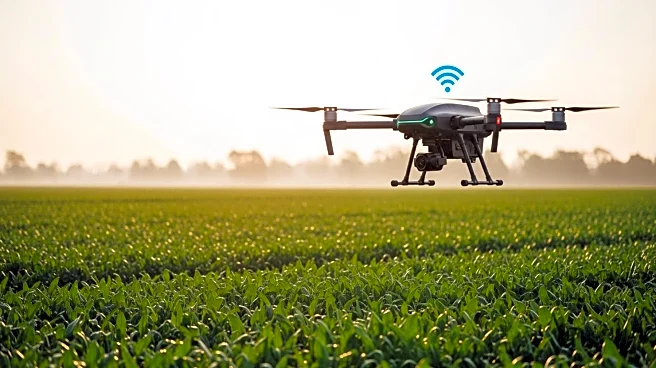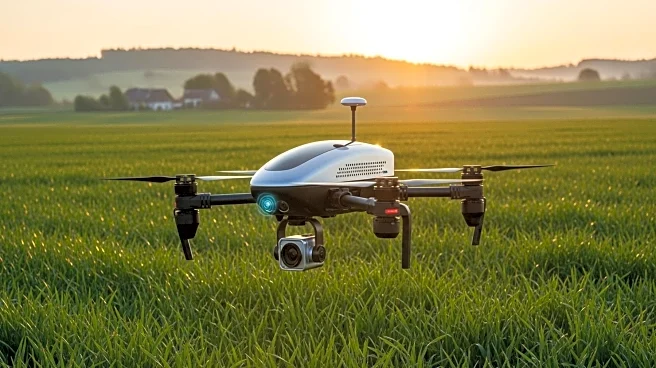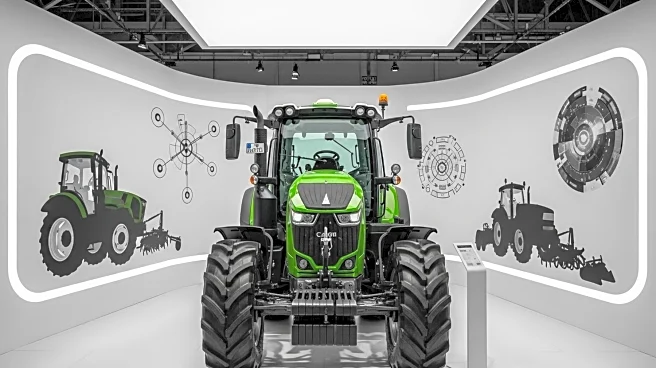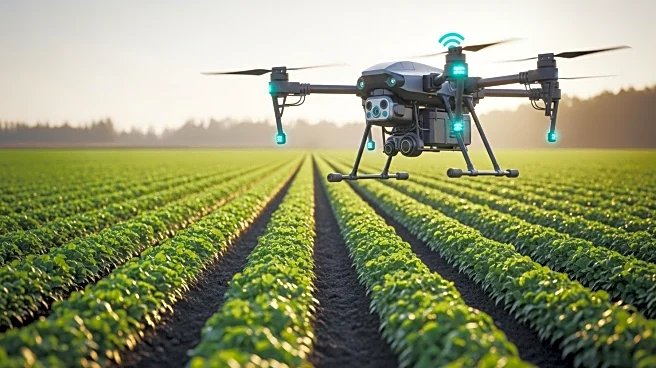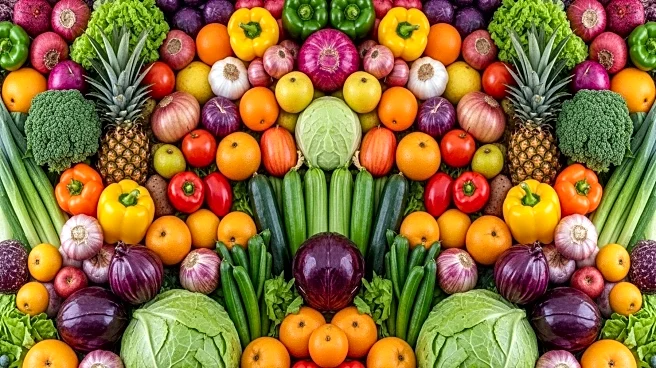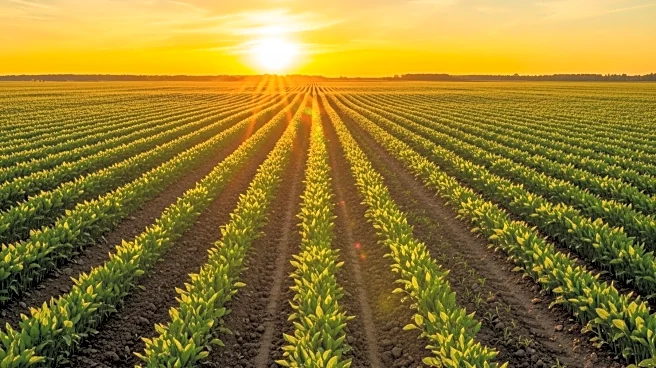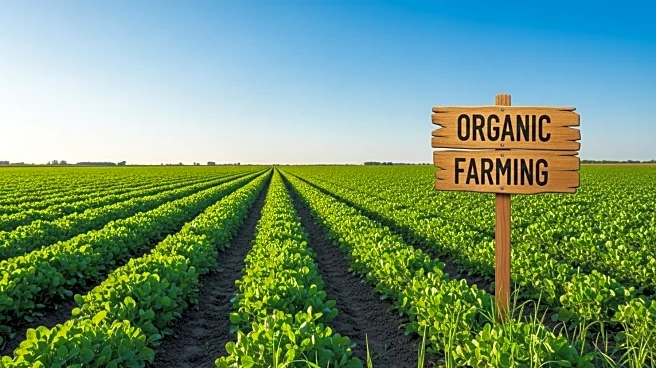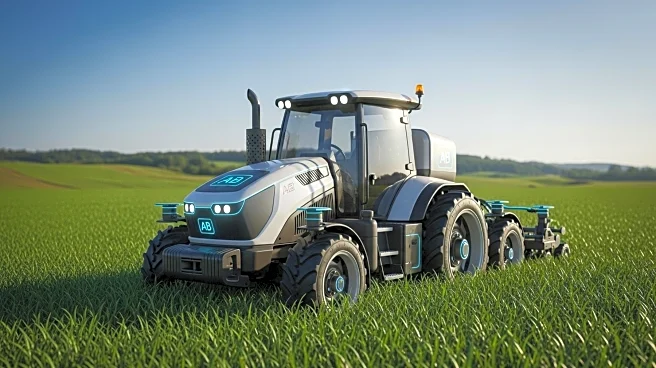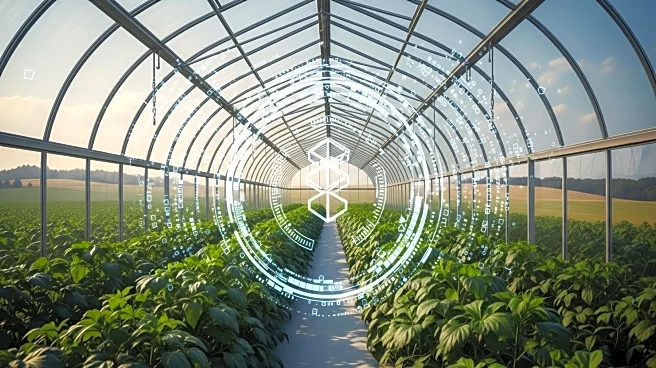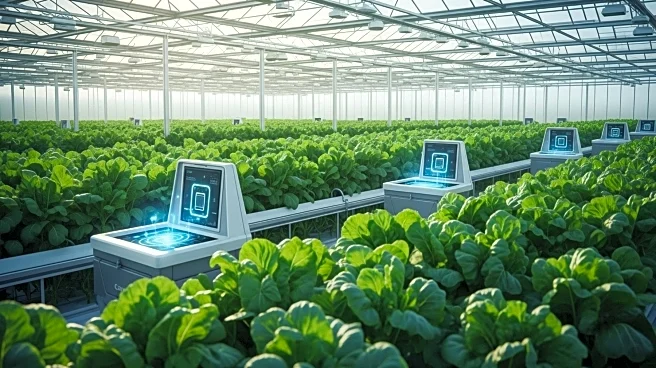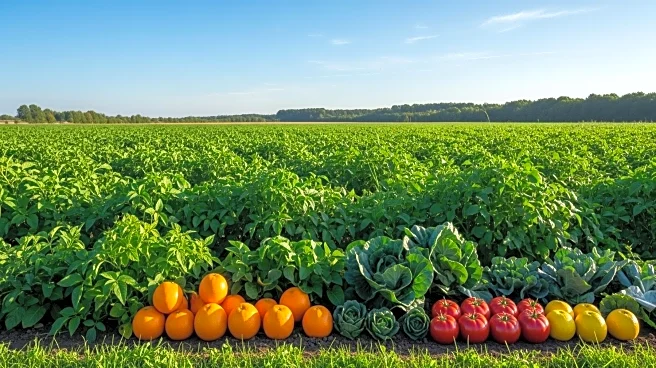What is the story about?
What's Happening?
The U.S. precision farming market is anticipated to grow significantly, reaching approximately USD 4.54 billion by 2030, according to DataM Intelligence. This growth is driven by the increasing adoption of Internet of Things (IoT) technologies and advanced analytics by farmers. Precision agriculture aims to optimize labor, time, and input resources, enhancing yields and reducing costs while maintaining environmental compliance. The market is characterized by hardware innovations such as GPS, GIS, sensors, and drones, which improve operational efficiency. The Northeast region shows strong adoption rates due to modern infrastructure and large-scale farm operations, while technological acceptance is spreading nationwide.
Why It's Important?
The expansion of precision farming technologies is crucial for the U.S. agricultural sector, as it promises enhanced productivity and sustainability. By integrating IoT and analytics, farmers can make data-driven decisions that optimize resource use and improve crop yields. This technological shift supports the agricultural industry's adaptation to modern challenges, including climate change and resource scarcity. The growth of this market also indicates potential economic benefits, as increased efficiency can lead to cost savings and higher profitability for farmers. Additionally, the adoption of precision farming can contribute to environmental conservation efforts by reducing waste and promoting sustainable practices.
What's Next?
The precision farming market is expected to continue evolving with advancements in AI-driven forecasting and satellite-based connectivity, particularly in rural areas. These developments will likely enhance the accessibility and effectiveness of precision agriculture technologies, further driving adoption across the country. Stakeholders, including technology providers and agricultural businesses, may focus on expanding partnerships and innovations to address existing market restraints, such as high capital investment and limited skilled labor. As the market grows, regulatory frameworks may also adapt to support the integration of new technologies in farming practices.
Beyond the Headlines
The shift towards precision farming represents a broader trend in agriculture towards digital transformation. This transition may have long-term implications for the industry, including changes in labor dynamics and the potential for new business models centered around data-driven agriculture. Ethical considerations regarding data privacy and the impact of automation on employment may also arise as technology becomes more embedded in farming operations.
AI Generated Content
Do you find this article useful?
